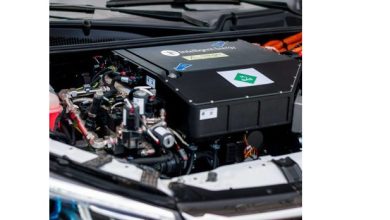Green hydrogen to drive $125B investments in India by 2030
Avendus Capital, released a report underlining the decarbonization potential of Green Hydrogen and the role it could play in India’s transition to a greener economy, estimating cumulative investments of USD 125 billion by 2030, across the value chain in India. This growth will be driven by rising sustainability focus, demonstrated commercial viability, ever-expanding use cases and a strong regulatory push. The report meticulously charts the course from production methodologies to wide-ranging applications, underlining significant opportunities and dispelling myths surrounding the economic viability of Green Hydrogen.
Prateek Jhawar, Managing Director & Head, Infrastructure & Real Assets Investment Banking, Avendus Capital said, “India is home to one of the cheapest renewable electricity costs globally, has abundant availability of fresh water and is emerging as a global manufacturing hub – three essential elements required for the production of Green Hydrogen at a competitive cost. We see an emergence of the first set of serious standalone and integrated participants forging partnerships to aggregate capabilities and infrastructure to tap into Green Hydrogen derivatives. The C&I business model for domestic consumption of Green Hydrogen will drive the first set of investments in the sector. Moreover, the steel industry will form the largest share of off-take contracts in the near-term with the imposition of the Carbon Border Adjustment Mechanism in the EU.”
The Indian Government has brought in significant production linked incentives (PLI) to bolster Green Hydrogen production and local electrolyser manufacturing. Players have actively participated and won capacities in tranche 1. The emergence of Green Hydrogen has also increased the target market for Renewable IPPs and can lead to improvement in project economics. According to the report, early-stage investment risks are likely to be short-lived as the sector is already at an inflection point.
Akhil Dokania, Director, Infrastructure & Real Assets Investment Banking, Avendus Capital said, “In terms of project bankability, Green Hydrogen is already viable for a subset of target off takers and its derivatives are also gaining visibility in global markets. Hence, long-term contracts are already available. In the absence of long-term contracts, we expect the grey molecule price benchmarks to act as de-facto for debt sizing. An anticipated corporate financing model expects to emerge and coexist with the project financing model.”
“Ammonia is the largest end-user segment for Green Hydrogen in the near-term and it plays a pivotal role in producing Green Hydrogen at scale. We expect that a nuanced understanding of global trade dynamics and risks to existing business will drive Oil & Gas companies to invest in Green Ammonia. There is also potential for partnerships and joint ventures between developers. They lack expertise in the sale of Ammonia, which could lead to collaboration with fertilizer companies. Given the push for hydrogen mobility, an offtake market for Green Hydrogen refueling is also likely to emerge, especially for long haul and large road applications,” added Akhil.




